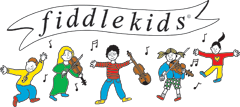Fiddlekids Sessions
This music resource page contains a collection of recordings
and study guides for the fiddle tunes taught at the monthly Fiddlekids Sessions workshops. The lessons and materials available here are free to Fiddlekids participants to use for personal study. Please email questions to: singingwood.com
Fiddlekids Sessions provides opportunities for young fiddlers to meet fellow fiddlers, to play fiddle music with other kids, to play for each other, to learn about jamming, and to learn fiddle tunes by ear. We welcome young violin players who are interested in fiddling. The difference between fiddle and violin music is primarily the repertoire.
The monthly Fiddlekids Sessions workshops and the week long yearly Fiddlekids Summer Camp are part of the Freight & Salvage music education program: Education at the Freight
Recordings from fiddle instructor John Blasquez
Cuckoo's Nest (lesson from February 13, 2011)
- Cuckoo's Nest (fiddle, mandolin, guitar, bass) - mp3
- Cuckoo's Nest (mandolin only) - mp3
- Cuckoo's Nest (mandolin) - Transcribe file (read more about Transcribe)
Cuckoo's Nest is played straight, without swing. It is a modal fiddle tune in the key of A dorian. The A dorian scale has the same notes as the G major scale, but its tonal center is A. Whether you navigate this series of notes as A dorian or G major, you'll be practicing the finger pattern for this tune. NOTE: There is entirely different tune (in D) called Cuckoo's Nest!
Please read about practicing fiddle with mandolin recordings.
Click here for fingering information about the A Dorian scale
Click here to practice along with notation and recording
The First of May (lesson from March 13, 2011)
The First of May is an Irish tune with some classic characteristics. I've recorded it with light swing, like a hornpipe. Part A part Part B are identical, except for the first two measures of Part B—this structure is found in other tunes, for instance, Red Haired Boy and The Boys of Bluehill. And this melody contains a slightly advanced characteristic found in some of the great fiddle tunes—the notes don't strictly adhere to a single scale. The melody is a cross between an A dorian and A mixolydian scale, because includes C natural and C#—so on the A string you'll need to use a low 2nd finger and a regular 2nd finger.
I've marked the Transcribe file in measure long sections, beginning at each "pickup"—in other words they go from beat 4 to beat 4.
Sandy Boys (lesson from April 10, 2011)
Sandy Boys is a favorite modal tune! The key is A mixolydian—so it has the same notes as the D major scale. (If you warm up with the D major scale you'll get your fingers set in the correct positions. Then if you center those notes around A 'll hear the modal quality of A mixolydian. One way to achieve that is to start and end the D scale on A.
This recording is straight: "even eights", no swing. And it includes fiddle, mandolin and guitar.
Lucy Farr (from the Fiddlekids Summer Camp 2011)
Lucy Farr is a taste of simple Irish beauty. It's an easy tune in the key of A major. The rhythm is swing. You can hear it with lots of variations on Martin Hayes' album, however he plays it in the more challenging key of Bb.
Brittan Suite from the Fiddlekids Summer Camp 2011)
This is a fiddle tune from Brittany, the north western Celtic corner of France. Overall the tune has more of a gypsy than Celtic feel, and I really don't know much about its origins. I heard it live at the original Freight & Salvage around 1980. I bought the band's cassette, learned the tune, and, well... I've never seen the cassette since, nor have I heard anyone else play the tune. And I no longer have a cassette player!
A 3-3-2 guitar accompaniment rhythm fits nicely, though I tend to drop that in the first portion of Part B.
Streak O' Lean (from the Fiddlekids Summer Camp 2011)
Streak O' Lean is in the key of C, and it really needs LOTS of swing.
Part A works well in 2nd position. Parts B, C, D are in first position.
In Part B there is some off-string "air time"—where you should lift the bow off the string on an up stroke. Listen for that. Make sure to move the bow, while off string, so it's near the frog as you come down for the next stroke. Landing near the frog will keep the bow from bouncing unintentionally. The "air time" notes have a dot beneath them in the notation.
This version is based on the fiddling of Rayna Gellert, from Uncle Earl's weird and wacky video, which is like Fung Fu meets an Appalachian River Dance on a slow Wednesday night at a backroads bar!
Pretty Little Dog (from the Fiddlekids Summer Camp 2011)
Another nice A model tune, that sounds Dorian, but actually is a hexatonic scale: A, B, C#, D, E, G. It's an easy tune to learn because part A and part B differ only by the initial seven notes.
I learned this from an old Critton Hollow recording. It works well in Cross A tuning. Whether you fiddle it in Cross A or in standard tuning, it's pretty easy to play it an octave lower.
Recommended Listening for Fiddlers
Check out lots of great fiddle old-time, Irish, and bluegrass recordings here: http://www.theoreticallycorrect.com/favorite-fiddle-albums/index.html
Singingwood Music

